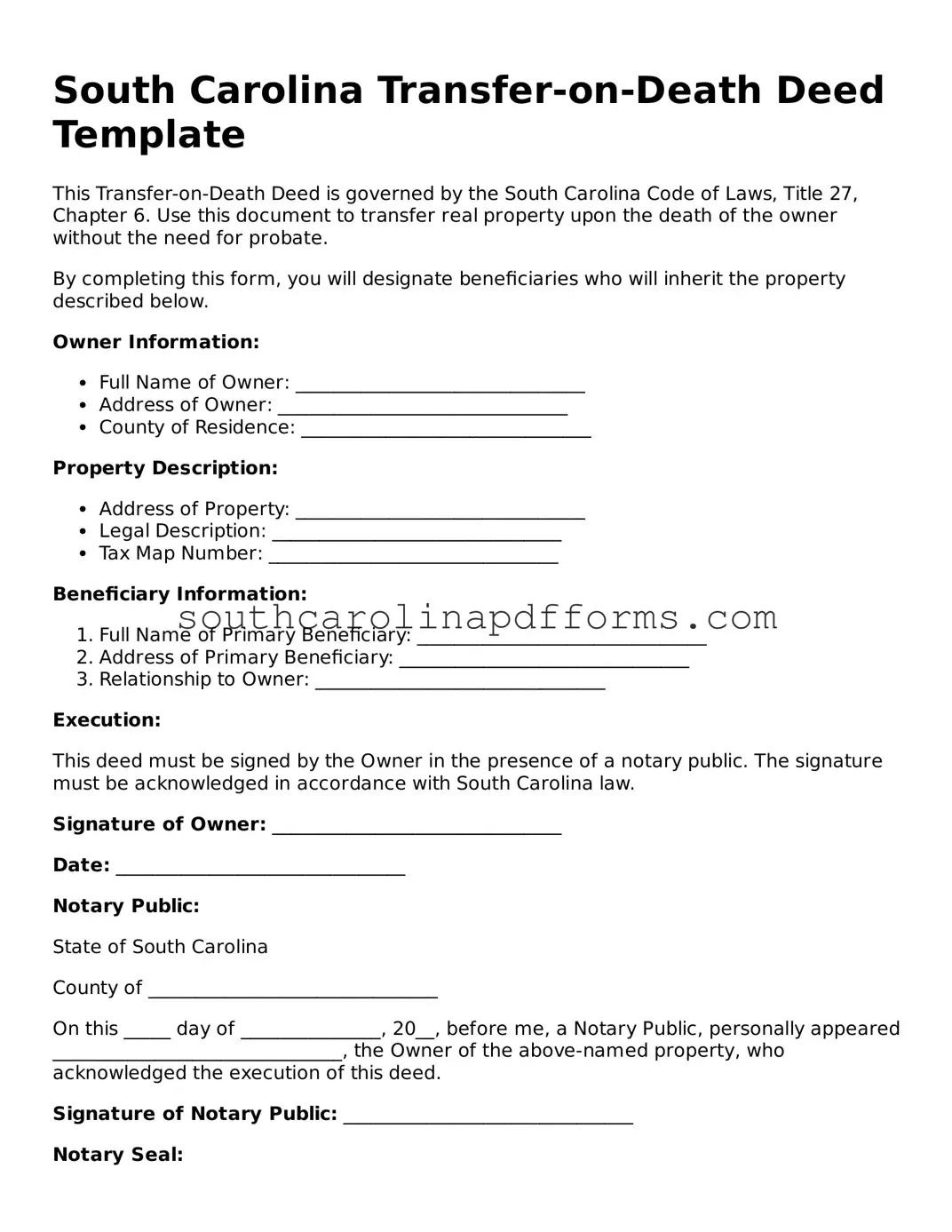The Transfer-on-Death Deed (TODD) form in South Carolina serves as a valuable estate planning tool, allowing property owners to designate beneficiaries who will inherit their real estate upon their death, without the need for probate. This legal instrument simplifies the transfer process, ensuring that the property passes directly to the named beneficiaries, thereby avoiding the often lengthy and costly probate process. The form requires specific information, such as the names of the current property owners and the intended beneficiaries, along with a detailed description of the property in question. Importantly, the TODD must be executed and recorded in accordance with South Carolina law to be valid. This means that the deed must be signed in front of a notary public and then filed with the county register of deeds. Once properly executed, the Transfer-on-Death Deed remains revocable during the property owner's lifetime, providing flexibility and control over the estate. This feature allows individuals to change beneficiaries or revoke the deed entirely if circumstances change, making it an adaptable option for many homeowners. Understanding the nuances of the TODD form can empower property owners to make informed decisions about their estate planning, ensuring that their wishes are honored after their passing.
